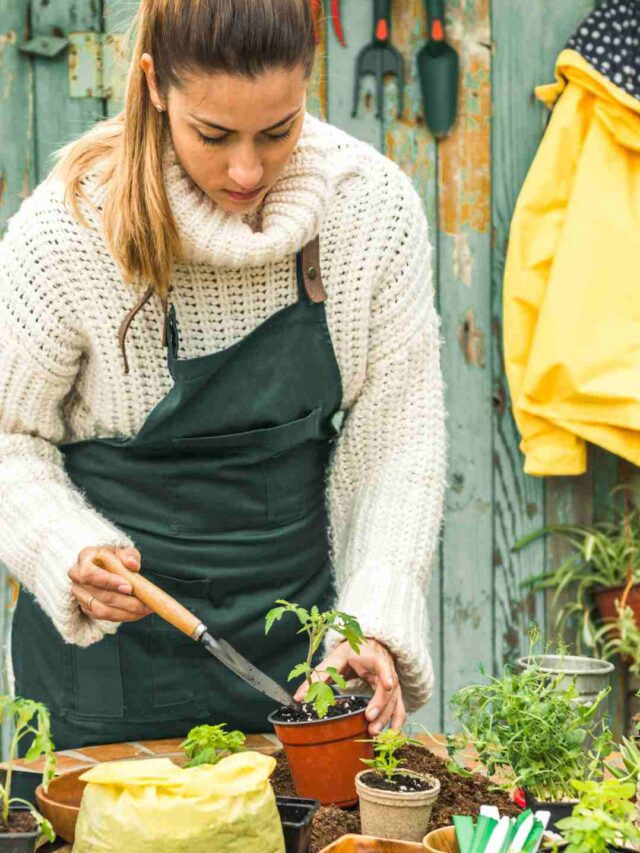4 Inspiring Ways How eCommerce Businesses And Marketplaces Are Ditching Plastic Packaging
Plastics have helped humanity in many ways. Still, we can and must do better to reduce the plastic pollution. Here’s how eCommerce Businesses and Marketplaces step up.

Plastic packaging, landfills, biodegradable, non-biodegradable, waste segregation are complex concepts to understand which come with more complex problems like negative impact on the earth’s ecosystem, ocean and land pollution, and more.
What’s more dangerous is the direct impact of increasing plastic use in packaging on global warming. If you still haven’t grasped the magnitude of the problem, then here are some stats that’ll put things into perspective for you.
Yearly plastic packaging waste can be enough in length to circle the entire earth at least four times. The amount of plastic wastage outnumbers the sea life by six to one because of which around 100 million marine animals die each year. 50% of the plastic produced can only be used once which means it directly ends up in ocean, seas, or landfills and we produce around 380 million tonnes of plastic, every year.
We can go on and on but I think these stats have shed enough light on the issue for everyone to be concerned about it.
Attempting to replace plastic completely is a long, long journey but it definitely needs our collective attention at this very moment. Since it’s a global-level problem, we will need a starting point to narrow our focus. And what better place to start than the part of the problem that’s rising aggressively?
We are talking about the plastic waste generated by the eCommerce industry. An industry that’s on an upward growth trend since its inception and hasn’t shown any signs of going the other way. With its growth, the plastic waste they produce for order fulfillment technology is also going to grow.
Currently, the usage of packaging material by the eCommerce industry is around 86 million tons per year. But that’s not the main problem. The main problem is that only 14% of this 86 million tons of packaging waste is recyclable.
So, how do we tackle a problem of this magnitude?
Easy.
By being creative and innovative.
And that’s what we are going to talk about in this article.
4 Innovative Ways for Ecommerce and Marketplaces are Ditching Plastic Packaging
1. Implementing Circular Economy
Circular economies are among the best solutions to tackle certain kinds of problems. They are designed in such a way that the resources stay in the system for as long as possible so that they can be reused and repurposed, thereby decreasing the total generated waste.
Here’s how it can be implemented to tackle the increasing plastic packaging problem of the eCommerce industry: fulfillment services, logistics providers and last-mile delivery parties will need to collect the discarded packaging material from the end customers for reuse, recycle, or even for sale.
The success of implementing this model for better management of wastage depends entirely on educating the end customers. They will need to be educated about the impact of their purchases on the environment. Moreover, they can be incentivized for cooperating in providing wastage in bulk.
For implementing this strategy, one of the major obstacles eCommerce companies and marketplaces can face is reverse logistics which is quite a capital-intensive and detail-oriented process.
The process needs to be coordinated and kept transparent among customers and vendors. According to the American Institute for Packaging and the Environment, the eCommerce industry can learn something from the meal kit industry which is leading in the development of packaging waste collection programs.
2. Adapting Sustainable Packaging Practices
Apart from being environment-friendly, adopting sustainable packaging practices come with benefits like the expansion of the customer base along with improved loyalty, lower shipping costs, and more.
Here are a few sustainable packaging strategies that eCommerce businesses can implement to take their first step towards being environment friendly:
- Compostable and biodegradable alternatives of plastic
- The materials used for this kind of packaging are compostable and are usually made from a plant-based polymer. These can be composted at home as well as commercially. The number of days it takes for the packaging to compost is based on the quality and materials used to create such kind of packaging.
- Edible and plant-based packaging
- Imagine receiving a parcel with packaging that can be turned into a plant. Yes, that’s right. Plant-based packaging allows eCommerce companies and marketplaces to reduce wastage and at the same time promote plantation. Then there’s edible packaging which works the best for the food and beverage industry. Both the packaging are made from biological sources.
- Tieing up with manufacturers following environment-friendly practices
- This a great way towards being a more sustainable and environment-friendly organization. If you have spare resources, you can invest in your suppliers and manufacturers and enable them to adopt more sustainable practices; just like Apple does with their suppliers to stay one step ahead of the technological advancements.
3. Optimizing the Supply Chain
The supply chain and the delivery practices also contribute highly to the pollution caused by eCommerce and marketplaces.
Along with product packaging, optimizing the supply chain by discontinuing the free shipping option or by implementing a minimum order value feature can help eCommerce companies become more sustainable.
You will need a skilled workforce to execute this task. You need to ensure that you are hiring the most reliable experienced individuals while tracking applicants.
Such practices will directly destress their entire supply chain as the number of trucks on the road decreases due to the better management of space inside the trucks.
Along with the recyclable packaging practices, the eCommerce businesses will also have to consider and make necessary changes in the shipping practices, methods, and policies.
4. Temperature-controlled Packaging
Perishable goods produced by the food and beverage industry usually have a shorter shelf life and need specialized transportation and logistics.
In 2019, around 15-20% of the total sales of the food and beverage industry are online sales and these numbers are going to keep growing in the future because of the pandemic as well as digital disruption the industry is going through.
For a better customer experience while being environment-friendly, eCommerce businesses can invest in sustainable insulating materials for their packaging and delivery processes. This will keep the food fresh, customers happy, and this earth alive.
Packaging is an Integral Part of Ecommerce
Just like building a site is important to woo customers, the customers also want the brands to take social responsibility and accountability for their actions as they are becoming more conscious about the consequences of choices.
Adopting more sustainable packaging practices is an ongoing trend among eCommerce giants, but we say do it for the planet you call home.
And since we still haven’t gotten a timeline for Mars colonization from Elon, we’d like our planet to be habitable for a little while longer.
P.S. It’s not just a brand’s responsibility to make better decisions and choices, you are equally part of this ecosystem, make wiser and sustainable choices.
FAQ
What Is eCommerce Plastic Packaging?
eCommerce plastic packaging refers to the use of plastic materials for packaging goods and products sold through online retail platforms.
Why Is Plastic Packaging Commonly Used in eCommerce?
Plastic packaging is popular in eCommerce due to its durability, light weight, and cost-effectiveness, helping to protect products during shipping and handling.
What Are the Environmental Concerns Associated with Plastic Packaging in eCommerce?
The environmental concerns include the contribution to plastic waste, which is often non-biodegradable, leading to pollution and harm to wildlife and ecosystems.
How Can eCommerce Businesses Make Their Plastic Packaging More Sustainable?
eCommerce businesses can use recycled or recyclable plastics, reduce the amount of packaging, or switch to biodegradable or compostable plastic alternatives.
What Are Some Alternatives to Traditional Plastic Packaging for eCommerce?
Alternatives include biodegradable plastics, paper or cardboard packaging, plant-based materials, and reusable packaging options.
How Does the Use of Plastic Packaging Impact Customer Perception in eCommerce?
Customer perception can be negatively impacted by excessive use of plastic packaging, especially among environmentally conscious consumers who prefer sustainable packaging options.
Can Reducing Plastic Packaging Cut Costs for eCommerce Businesses?
Reducing plastic packaging can cut costs by minimizing material usage and shipping weight, and possibly avoiding fees associated with environmental regulations.
What Is the Role of Plastic Packaging in Product Safety in eCommerce?
Plastic packaging plays a crucial role in product safety by providing a barrier against moisture, dust, and damage, ensuring products arrive intact and in good condition.
How Can eCommerce Businesses Balance Product Protection and Sustainable Packaging?
Businesses can balance these needs by choosing eco-friendly materials that still provide adequate protection, like padded mailers made from recycled content or biodegradable air pillows.
What Innovations Are Emerging in Eco-Friendly eCommerce Packaging?
Innovations include plant-based plastics, packaging that dissolves in water, edible packaging materials, and advanced biodegradable options that offer similar durability to traditional plastics.
How Does the Packaging Design Affect the Efficiency of Using Plastic in eCommerce?
Efficient packaging design reduces the use of unnecessary materials, optimizes package size to product dimensions, and can lead to less overall waste and reduced shipping costs.
What Is the Role of Consumer Education in eCommerce Plastic Packaging?
Educating consumers about how to properly dispose of or recycle packaging materials can play a significant role in minimizing the environmental impact of plastic packaging.
Can Plastic Packaging Be Designed for Reusability in eCommerce?
Yes, designing for reusability involves creating durable packaging that consumers can repurpose, such as reusable shipping bags or containers.
How Important Is Transparency in a Company’s Use of Plastic Packaging?
Transparency is crucial as consumers increasingly value honesty about environmental practices. Companies should openly communicate their packaging choices and sustainability efforts.
What Are the Challenges of Recycling eCommerce Plastic Packaging?
Challenges include the diversity of plastic types, which can complicate recycling processes, and the lack of recycling infrastructure in many areas.
How Can eCommerce Companies Encourage the Recycling of Plastic Packaging?
Companies can encourage recycling by providing clear instructions on how to recycle the packaging, using widely recyclable materials, and potentially partnering with recycling initiatives.
What Impact Does the Shift Towards Sustainable Packaging Have on the eCommerce Industry?
The shift towards sustainable packaging is leading to increased innovation in materials, changes in consumer preferences, and potentially new industry standards and regulations.
How Can the Life Cycle of eCommerce Plastic Packaging Be Extended?
The life cycle can be extended by designing for durability and multiple uses, establishing return programs for packaging, and using materials that are easily recyclable.
How Are eCommerce Businesses Adapting to Consumer Demand for Sustainable Packaging?
Businesses are adapting by exploring eco-friendly packaging materials, participating in recycling programs, and actively communicating their sustainability efforts to consumers.
What Regulations Impact the Use of Plastic Packaging in eCommerce?
Regulations that impact the use of plastic packaging vary by region and can include restrictions on certain types of plastics, requirements for recyclability, and guidelines for labeling and disposal.
How Can eCommerce Businesses Implement a Closed-Loop Packaging System?
Implementing a closed-loop system involves designing packaging that can be returned, recycled, and reused in new packaging, minimizing waste and resource consumption.
What Role Do Bioplastics Play in eCommerce Packaging?
Bioplastics, made from renewable resources, offer an alternative to traditional plastics, reducing reliance on fossil fuels and potentially offering better biodegradability.
How Can Packaging Size Optimization Reduce Plastic Use in eCommerce?
Optimizing packaging size reduces plastic use by eliminating unnecessary material, leading to less waste and more efficient shipping processes.
Are There Cost-Effective Sustainable Alternatives to Plastic Packaging for Small eCommerce Businesses?
Small businesses can explore cost-effective alternatives like recycled paper, biodegradable packing peanuts, and cardboard, which can be comparable in cost to traditional plastics.
What Are the Trends in Consumer Preferences Regarding Plastic Packaging in eCommerce?
Consumers are increasingly preferring sustainable packaging, with many willing to pay more for eco-friendly options, and are more loyal to brands that demonstrate environmental responsibility.
How Does Legislation Influence eCommerce Plastic Packaging Practices?
Legislation, such as bans on single-use plastics and regulations on packaging waste, influences eCommerce businesses to adopt more sustainable practices and explore alternative materials.
What Are the Benefits of Using Compostable Plastic Packaging in eCommerce?
Compostable plastics, under the right conditions, break down into non-toxic components, reducing environmental impact and offering a more sustainable option for consumers.
How Can eCommerce Packaging Be Designed for Multiple Uses?
Designing for multiple uses involves creating durable, versatile packaging that consumers can repurpose for storage, shipping, or other uses, extending its life cycle.
What Impact Do Plastic Packaging Bans Have on eCommerce Businesses?
Plastic packaging bans force eCommerce businesses to innovate and shift towards more sustainable packaging solutions, which can initially be challenging but ultimately beneficial for brand image and the environment.
How Important Is Consumer Feedback in Shaping eCommerce Packaging Strategies?
Consumer feedback is vital as it guides businesses on their audience’s preferences and concerns regarding sustainability, helping to tailor packaging strategies to meet market demands.
Boosting Visibility Where It Matters Most
Boosting Visibility Where It Matters Most Being [...]
Why Data-Driven Decision Making is Crucial for Organizational Growth?
Why Data-Driven Decision Making is Crucial for Organizational Growth? [...]
The SEO Strategy Shift You Can’t Afford to Ignore in 2025
The SEO Strategy Shift You Can't Afford to Ignore in 2025 [...]
Mastering Ghost Mannequin Photography: A Complete Guide
Mastering Ghost Mannequin Photography: A Complete Guide [...]
Staying Ahead in a World of Constant Online Scrutiny
Staying Ahead in a World of Constant Online Scrutiny [...]
How Eco-Conscious Vehicle Transport Services Are Gaining Ground
How Eco-Conscious Vehicle Transport Services Are Gaining Ground [...]
Create more and better content
Check out the following resources and Grow!









